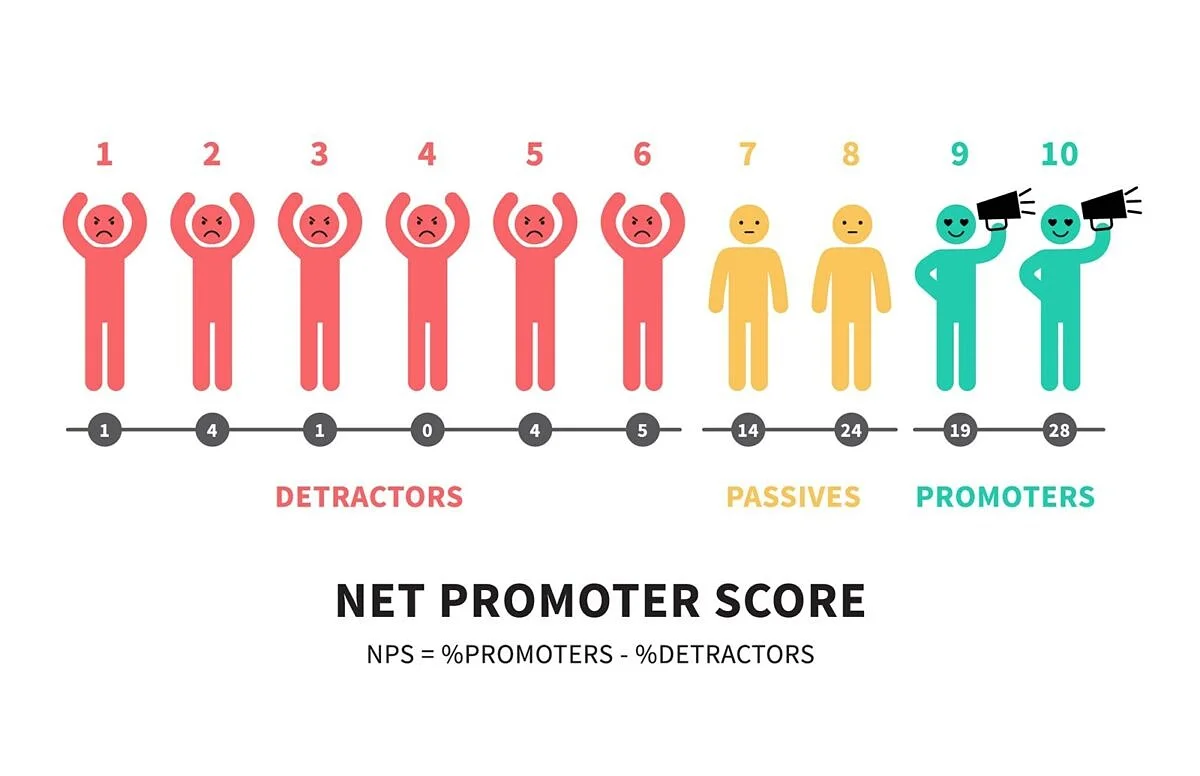Referral marketing: nothing is more valuable than good referrers
The ratings of satisfied customers are essential for a company's success. The referral rate is therefore one of the most important KPIs for companies. In this story you will learn how to determine this rate and what can be deduced from it.

Positive customer feedback is by far the most effective way to gain new customers. Referral always help gain trust from the outset. According to a PwC study conducted in 2018, every third person buys a product based on an influencer referral. A Postbank study conducted in 2019 showed that it is even more than half among young people aged 16 to 18. But there are even more influential referrers than YouTube and Instagram celebrities: a company’s existing customers. Those who are enthusiastic about a product recommend it to their friends and acquaintances. The same applies to services. This affects customer relationships in various ways:
- Referral recipients already have a great deal of trust from the outset and make their purchase decisions much more readily.
- The trust of the referrer in the company they have recommended also increases if the recipient of the recommendation thanks them and reports a positive buying experience.
- Knowing which customers are already promoters opens up numerous possibilities from rewarding active referrers to turning passive satisfied customers into promoters through customer relationship measures and much more.
Net Promoter Score (NPS): your target group’s willingness to recommend you
In order to calculate the NPS, customers only have to answer one question, namely the probability that they will recommend product/service/brand X to others. The answer is entered on a scale from 0 to 10, with 10 indicating the highest probability. The respondents who select a 9 or 10 are considered Promoters. A rating of 7 or 8 does not indicate a high probability of recommendation. These customers are categorized as Passives. Ratings from 0 to 6 form the group of Detractors.
To calculate the NPS, the percentage value of the Detractors is subtracted from that of the Promoters. The Passives are not included in the calculation:
Net Promoter Score = percentage of Promoters - percentage of Detractors
Example: 55% of respondents are Promoters, 48% are Detractors. The NPS is 7.

Net Promoter Score: benchmarks in various industries
In a recent survey, the market research company puls Markforschung examined 284 brands from 18 sectors in Germany. This study was distinguished by the fact that the NPS of one target group up to 30 and one over 50 was calculated. The results were interesting portrayals of “aging” brands such as Wernesgrüner, which showed a particularly large gap between the younger and older NPS, and of traditional brands that successfully appeal to young and old. An example of the latter is Mercedes-Benz, which showed an NPS of 32 in the age group up to 30 and an NPS of 25 for in the age group over 50.
Referral rate: the most important key figure in referral marketing
The NPS indicates the immediate probability of a referral. At the same time, it also indicates the level of customer satisfaction and loyalty. However, it remains a probability. In order to find out how many referrals have actually taken place, the referral rate must be determined. This is derived from the percentage of customers who have already recommended the brand or product to someone. There is no more authentic and effective advertising than a referral. The referral rate is therefore also referred to as an Ultimate Performance Indicator (UPI).
How to analyze the referral rate
To determine the referral rate, some companies ask their customers directly. Another possibility consists of asking new customers how they became aware of the brand or product, or even asking them who referred them. Strictly speaking, the second variant actually refers to conversion, since the customer surveyed has already made the purchase, but it is used most frequently in practice.
In addition to the question of how many and which customers recommend the brand to others, the analysis can be further refined at will. Other interesting information can be obtained by asking the following:
- Which services are most frequently recommended?
- Which customers are the best referrers?
- What is the average value of a customer’s referral?
3 tips for systematic referral management
- An NPS survey as a sales follow-up: a single question following the purchase can be answered with a single click. Matching the NPS with other buyer data such as age, gender or product group refines the picture.
- Determine the referral rate: Which new customers were recommended by existing customers? Many companies rely on a reward systems for this and offer certain benefits to existing customers who refer them to acquaintances. In order to get these, the information must be provided by the person they referred. Appropriate incentives can be used to minimize wastage.
- With the help of a customer experience management system, further measures can be developed and implemented to increase the referral rate. This also includes the targeted further development of products depending on their referral rate.
Next-level referral marketing instead of word of mouth
Telling someone about a product is word of mouth. A certain dissemination of information can take place via word of mouth, but a measurable increase in success cannot. The most important KPIs of referral marketing – NPS and referral rate – allow for valid statements about customer satisfaction, targeted improvements in service and products and thus an increase in a company’s success.





